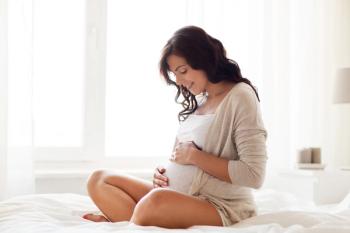
Combination therapy for uterine fibroids and endometriosis
Reductions in symptom incidence and severity from uterine fibroids and endometriosis have been observed in patients receiving relugolix combination therapy.
A daily gonadotropin-releasing hormone (GnRH) receptor antagonist combination product has proven effective at treating uterine fibroids (UF) associated heavy menstrual bleeding (HMB) and endometriosis (EM) associated moderate to severe pain.
UF and EM impact about 7 in 10 women by menopause onset and 1 in 10 of reproductive age worldwide. These conditions often lead to severe outcomes, with 1 in 3 women with UF requesting treatment for HMB. HMB has been linked to anemia which can be life-threatening.
EM symptoms include menstrual pain, nonmenstrual pelvic pain, deep pain during intercourse, lower back pain, painful urination, and gastrointestinal symptoms. Women with EM often experience a 4 to 11 yeardelay between symptom onset and diagnosis.
Traditionally, UF and EM treatment is dependent on the surgical skills of gynecologists, with first-line treatment including off label hormonal contraceptives.There is lacking efficacy data for the management of UF and EM symptoms through these products.
Severe symptom management has been accomplished through GnRH receptor antagonists, and new treatment options can be developed with the introduction of oral GnRH receptor antagonists. However, GnRH oral antagonists often cause worsened UF and EM symptoms before symptom suppression and have a limited treatment period.
Investigators developed an orally active, nonpeptide, GnRH receptor antagonist called relugolix. Relugolix prevents the follicle-stimulating hormone and luteinizing hormone from releasing into the systemic circulation, preventing follicular development and progesterone production. This leads to improved HMB and pain symptoms.
Relugolix has been associated with symptoms of hypoestrogenic state such as vasomotor symptoms and bone mineral density (BMD) loss when used as a monotherapy. Because of this, relugolix monotherapy use is restricted to 6 months.
Systemic E2 concentrations were developed by adding a 1 mg dose of E2 and a 0.5-mg dose of norethindrone acetate (NETA) to relugolix. These concentrations are in a therapeutic range and reduce vasomotor symptom and BMD loss risks. This improves patients’ quality of life and may delay or prevent the need for surgery.
Relugolix combination therapy (relugolix-CT) consisting of relugolix 40 mg, estradiol 1 mg, and NETA 0.5 mg has been approved as a once daily oral GnRH antagonist combination therapy called MYFEMBREE. It can be used to treat heavy menstrual bleeding and moderate to severe pain caused by UF and EM, respectively.
Relugolix-CT allows for long-term treatment of UF and EM symptoms. Efficacy data has been positive, indicating an initial peak concentration within 15 minutes postdose and following peaks for up to 12 hours postdose.
Doses of up to 80 mg relugolix were evaluated in premenopausal women in a phase 1 trial. Decreases in pituitary and ovarian hormone concentrations were observed, but after 24 hours 40 mg and 80 mg doses led to similar E3 concentrations, indicating doses above 40 mg do not provide additional help.
The trial also examined multiple-dose administration of relugolix. This form of administration showed maintained reductions in pituitary and ovarian hormone concentrations when taking relugolix once every 24 hours, with E2 concentrations consistently low after 14 days.
A phase 3 trial on relugolix-CT also showed positive efficacy results. E2 concentrations in patients receiving relugolix-CT were similar to those observed in the early follicular phase of a normal menstrual cycle and were improved compared to patients taking relugolix alone.
Overall, data has indicated improved outcomes in patients with UF and EM after taking daily relugolix-CT. Future studies will be conducted to analyze the contraceptive safety and efficacy of this therapy.
Reference
Ferreira JC & Migoya E. Development of relugolix combination therapy as a medical treatment option for women with uterine fibroids or endometriosis. F&S Reports. 2023;4(2):73-82. doi:10.1016/j.xfre.2022.11.010
Newsletter
Get the latest clinical updates, case studies, and expert commentary in obstetric and gynecologic care. Sign up now to stay informed.











